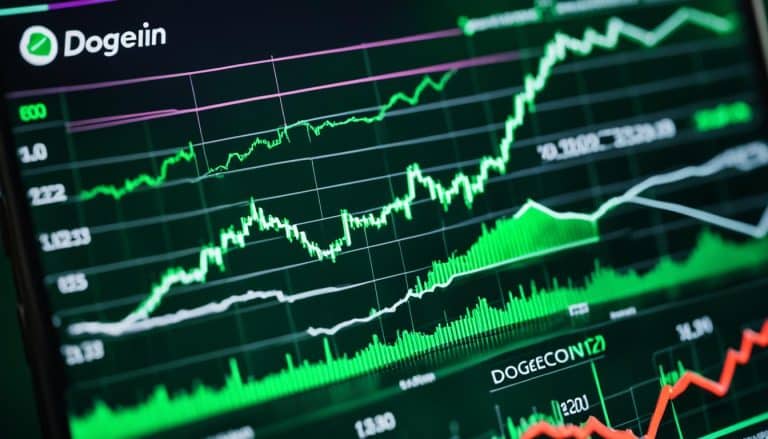Unveiling the Power of Wrapped Crypto Assets: Risks & Rewards
Curious about how wrapped crypto assets are revolutionizing the world of digital currencies? Imagine seamlessly bridging the gap between different blockchain networks while expanding the utility of your favorite cryptocurrencies. Wrapped crypto assets, such as Wrapped Bitcoin (WBTC) and Wrapped Ethereum (WETH), are creating new opportunities for decentralized finance (DeFi) enthusiasts like you.
By tokenizing cryptocurrencies from one blockchain onto another, wrapped assets unlock a realm of possibilities for cross-chain compatibility and enhanced liquidity. With wrapped tokens, you can access decentralized applications and smart contracts across various blockchain ecosystems without being limited by network constraints. Embrace the future of finance with wrapped crypto assets and explore the endless potential they offer in the ever-evolving landscape of digital assets.
Overview of Wrapped Crypto Assets
In the realm of digital currencies, wrapped crypto assets play a crucial role in expanding accessibility and interoperability across various blockchain networks. Examples such as Wrapped Bitcoin (WBTC) and Wrapped Ethereum (WETH) illustrate how these tokenized assets bridge the gap between different blockchains, enhancing liquidity and enabling seamless transactions.
By wrapping cryptocurrencies, you can unlock new possibilities for decentralized finance (DeFi) enthusiasts. These assets allow you to participate in multiple blockchain ecosystems without facing network restrictions, providing a glimpse into the future of finance and the immense potential of digital assets.
Wrapped crypto assets serve as a gateway to a broader range of investment opportunities, offering users the flexibility to engage in cross-chain transactions and utilize different DeFi protocols. Through wrapped tokens, you can navigate the decentralized landscape with ease, benefiting from increased efficiency and accessibility in the digital asset space.
As the popularity of wrapped crypto assets continues to grow, they present a unique solution for individuals seeking to diversify their digital asset portfolios and explore alternative investment avenues. The innovations surrounding these tokenized assets reshape the financial landscape, paving the way for enhanced liquidity, cross-chain compatibility, and a more interconnected decentralized ecosystem.
Embracing the concept of wrapped crypto assets opens doors to a more inclusive and dynamic digital economy, where opportunities for growth and innovation are abundant. By understanding the potential of these tokenized assets and their impact on the cryptocurrency market, you can position yourself to navigate the evolving landscape of digital finance with confidence and agility.
Benefits of Using Wrapped Crypto Assets

When it comes to managing your crypto assets effectively, leveraging wrapped crypto assets can provide you with several distinct advantages. These benefits contribute to enhancing your overall digital currency experience and opening up new possibilities within the blockchain space. Here are some key reasons why utilizing wrapped crypto assets can be advantageous for you:
- Enhanced Cross-Chain Compatibility: By utilizing wrapped crypto assets like Wrapped Bitcoin (WBTC) and Wrapped Ethereum (WETH), you can seamlessly transact across different blockchain networks. This capability allows you to overcome network limitations and tap into a wider range of decentralized finance (DeFi) opportunities.
- Increased Liquidity: Wrapped crypto assets play a crucial role in boosting liquidity within the decentralized ecosystem. Through their tokenized form, these assets facilitate quicker and more efficient transactions, thereby enhancing the overall liquidity of the digital currency market.
- Diversification of Investment Portfolios: One of the significant benefits of wrapped crypto assets is that they serve as a gateway to diversifying your investment portfolio. By holding a variety of tokenized assets, you can spread risk and explore alternative investment avenues, contributing to a more balanced and resilient portfolio.
- Seamless Interoperability: Wrapped crypto assets enable you to navigate seamlessly between different blockchain ecosystems. This interoperability ensures that you can engage with various DeFi applications, exchanges, and protocols without facing compatibility issues, offering you a more integrated digital currency experience.
- Future-Proofing Your Investments: Embracing wrapped crypto assets equips you with the flexibility to adapt to the evolving landscape of digital finance. These tokenized assets provide insights into the future of finance and empower you to position your investments strategically in a dynamic and ever-changing market.
Incorporating wrapped crypto assets into your digital currency strategy can offer you unparalleled flexibility, liquidity, and diversity while expanding your access to a growing range of DeFi opportunities. By leveraging these tokenized assets, you can navigate the decentralized ecosystem with confidence and seize new possibilities in the realm of digital finance.
Popular Wrapped Crypto Assets in the Market
When it comes to wrapped crypto assets, there are several popular options available in the market that play a significant role in facilitating cross-chain transactions and enhancing liquidity within the decentralized finance (DeFi) ecosystem. These wrapped crypto assets enable users to interact seamlessly across different blockchain networks, expanding their investment horizons and maximizing opportunities in the digital finance space.
Wrapped Bitcoin (WBTC)
Wrapped Bitcoin (WBTC) stands out as one of the most recognized wrapped crypto assets in the market. It is an ERC-20 token pegged 1:1 to Bitcoin, allowing users to leverage the benefits of both Bitcoin and Ethereum ecosystems. By wrapping Bitcoin, users can bring the liquidity and stability of Bitcoin to Ethereum-based decentralized applications (dApps) and DeFi platforms. With WBTC, you can access various DeFi protocols, participate in yield farming, and enjoy the flexibility of transacting with Bitcoin on the Ethereum network seamlessly.
Wrapped Ethereum (WETH)
Wrapped Ethereum (WETH) is another prominent wrapped crypto asset that tokenizes Ether on the Ethereum blockchain, making it compatible with ERC-20 standards. WETH offers enhanced versatility and interoperability for Ether holders, enabling them to engage in DeFi activities such as decentralized exchanges, lending, and yield aggregation. By converting Ether into WETH, users can access a wide range of decentralized applications on Ethereum and participate in liquidity pools, token swaps, and other DeFi functionalities efficiently.
Other Popular Wrapped Assets
In addition to WBTC and WETH, several other wrapped crypto assets have gained traction in the market, providing users with diverse investment opportunities and cross-chain capabilities. Examples of popular wrapped assets include Wrapped Litecoin (WLTC), Wrapped Zcash (WZEC), and Wrapped Polkadot (WPDOT). These wrapped tokens offer users the flexibility to transact with different cryptocurrencies across various blockchain networks, contributing to the growing trend of interoperability and liquidity enhancement in the digital asset space.
How to Use Wrapped Crypto Assets
When it comes to incorporating wrapped crypto assets like Wrapped Bitcoin (WBTC) and Wrapped Ethereum (WETH) into your digital currency strategies, there are several essential steps to follow to maximize their utility seamlessly. Here’s how you can effectively utilize wrapped crypto assets:
Utilize Crypto Asset Management Tools
To manage your wrapped crypto assets efficiently, consider using advanced crypto asset management platforms that offer features like tracking, monitoring, and portfolio management for various digital assets, including wrapped tokens.
Securely Store in Digital Currency Wallets
To ensure the safety of your wrapped crypto assets, store them in secure digital currency wallets that support these tokens. It’s crucial to choose wallets that provide robust security features and enable easy access to your assets for seamless transactions.
Explore Cross-Chain Bridge Transactions
Take advantage of cross-chain bridge transactions to facilitate the seamless transfer of wrapped assets between different blockchain networks. This feature enhances interoperability and allows you to access a broader range of decentralized finance (DeFi) opportunities.
Engage in DeFi Token Swapping
Participate in DeFi token swapping using wrapped crypto assets to exchange one token for another efficiently. By leveraging token swapping protocols, you can diversify your crypto portfolio and explore various investment opportunities within the DeFi ecosystem.
Benefit from Liquidity Pool Yields
Consider contributing your wrapped assets to liquidity pools to earn yields and participate in decentralized exchanges’ liquidity provision. By supplying liquidity to trading pairs, you can generate passive income through trading fees and other reward mechanisms.
Stay Informed with Crypto Price Monitoring
Stay updated on the prices of wrapped crypto assets by utilizing cryptocurrency price monitoring tools. These tools provide real-time price data, market trends, and alerts to help you make informed decisions when trading or investing in wrapped tokens.
By following these practical steps, you can leverage wrapped crypto assets effectively, enhance your participation in the digital currency landscape, and tap into the potential of decentralized finance opportunities seamlessly.
Risks Associated with Wrapped Crypto Assets
When dealing with wrapped crypto assets like Wrapped Bitcoin (WBTC) and Wrapped Ethereum (WETH), it’s important to be aware of certain risks that come with their usage. Here are some key risks you should consider when engaging with wrapped crypto assets:
Volatility Risk
Wrapped crypto assets, just like their underlying cryptocurrencies, are subject to significant price fluctuations. The volatile nature of the crypto market can result in rapid and substantial changes in the value of wrapped assets. You should be prepared for the possibility of sudden price swings that may impact the value of your investments.
Smart Contract Risk
Wrapped crypto assets rely on smart contracts to operate. Smart contracts are self-executing contracts with the terms of the agreement between buyer and seller directly written into code. However, smart contracts are not immune to bugs or vulnerabilities. In the event of a smart contract exploit or error, your wrapped assets could be at risk of theft or loss. Ensure that you understand the smart contract mechanisms behind wrapped assets and the associated risks.
Counterparty Risk
When using wrapped crypto assets, you are often required to trust a custodian to hold the underlying assets securely. This introduces counterparty risk, as you depend on the custodian to fulfill their obligations. In the event of insolvency, fraud, or operational issues with the custodian, your wrapped assets might be at risk. It’s crucial to choose reputable custodians and platforms with robust security measures to mitigate counterparty risk.
Regulatory Risk
The regulatory environment surrounding crypto assets is complex and evolving. Changes in regulations or government actions concerning crypto assets could impact the legality or availability of wrapped assets. Regulatory uncertainty may lead to restrictions on the use of wrapped assets, affecting their liquidity and value. Stay informed about regulatory developments in the crypto space to assess and manage regulatory risks associated with wrapped assets.
Custodial Risk
When holding wrapped assets on a centralized platform, you entrust your assets to a third party. This introduces custodial risk, as centralized exchanges and platforms are vulnerable to hacks, cyber attacks, or internal malpractices. In the event of a security breach or platform failure, your wrapped assets could be compromised. Consider using secure storage solutions, such as hardware wallets, to minimize custodial risk and maintain control over your assets.
Conclusion
Ensure you grasp the risks involved with wrapped crypto assets to protect your investments. Embrace the enhanced accessibility and liquidity these assets offer across various chains. Diversify your portfolio with wrapped assets like Wrapped Litecoin (WLTC) and Wrapped Zcash (WZEC). Stay vigilant of price fluctuations, smart contract vulnerabilities, and regulatory changes. Safeguard your assets by understanding and managing risks effectively.
Frequently Asked Questions
What are wrapped crypto assets and how do they enhance accessibility in the digital currency landscape?
Wrapped crypto assets, like Wrapped Bitcoin (WBTC) and Wrapped Ethereum (WETH), are tokens pegged to the value of their underlying cryptocurrencies. They improve accessibility by enabling these assets to be used on different blockchains, facilitating cross-chain transactions and enhancing liquidity in DeFi.
What other wrapped assets besides WBTC and WETH provide diverse investment opportunities?
In addition to WBTC and WETH, other wrapped assets such as Wrapped Litecoin (WLTC), Wrapped Zcash (WZEC), and Wrapped Polkadot (WPDOT) offer investors a range of options to diversify their portfolios and participate in various blockchain ecosystems.
What risks are associated with wrapped crypto assets?
Risks associated with wrapped crypto assets include volatility risk from price fluctuations, smart contract risk due to vulnerabilities, counterparty risk when using custodians, regulatory risk from changing regulations, and custodial risk on centralized platforms.
How can investors protect themselves from these risks when dealing with wrapped assets?
To safeguard investments and assets when dealing with wrapped assets, individuals should understand the risks involved and take steps to mitigate them, such as conducting thorough research, diversifying their investments, choosing reputable custodians, and staying informed about regulatory developments.






